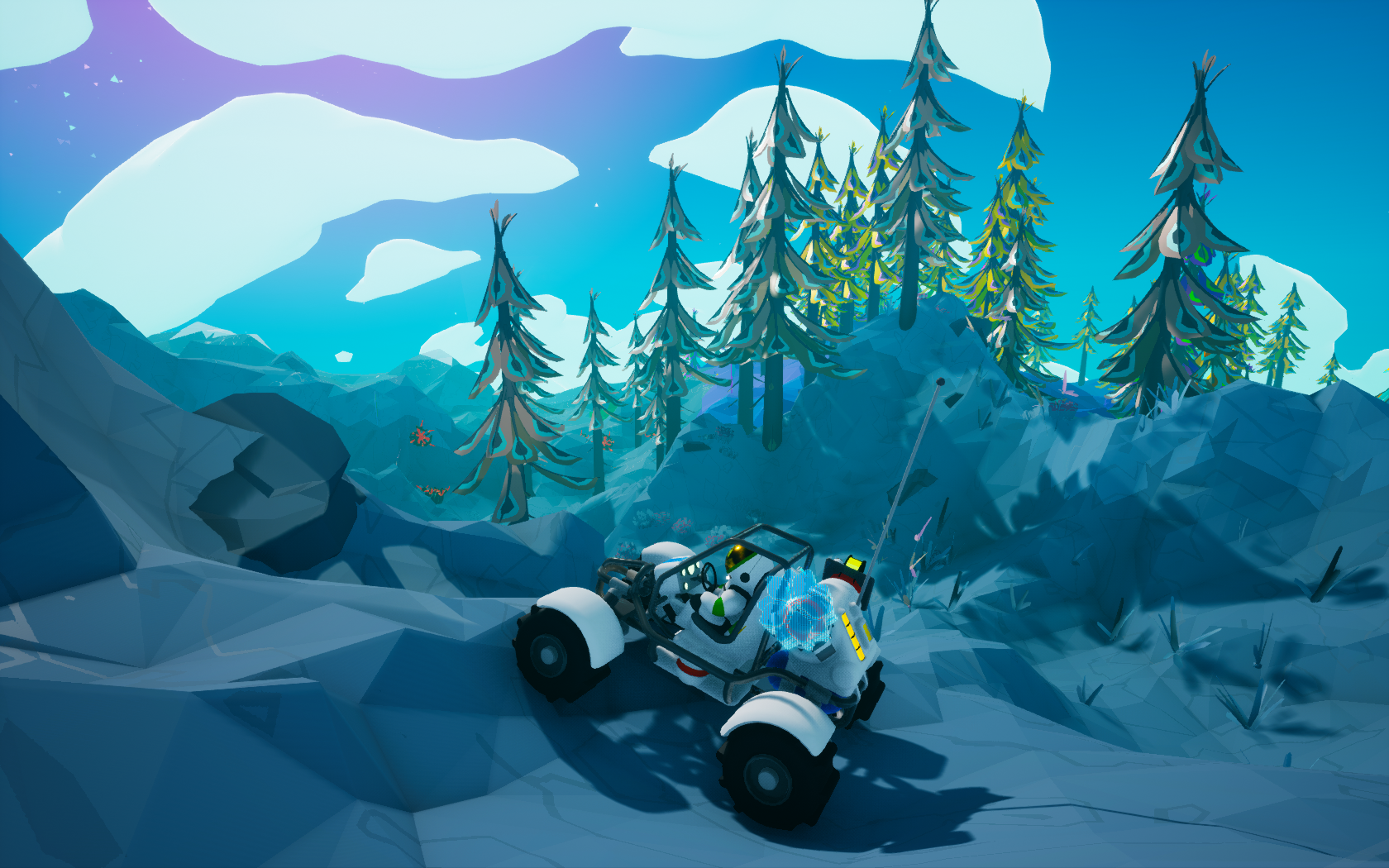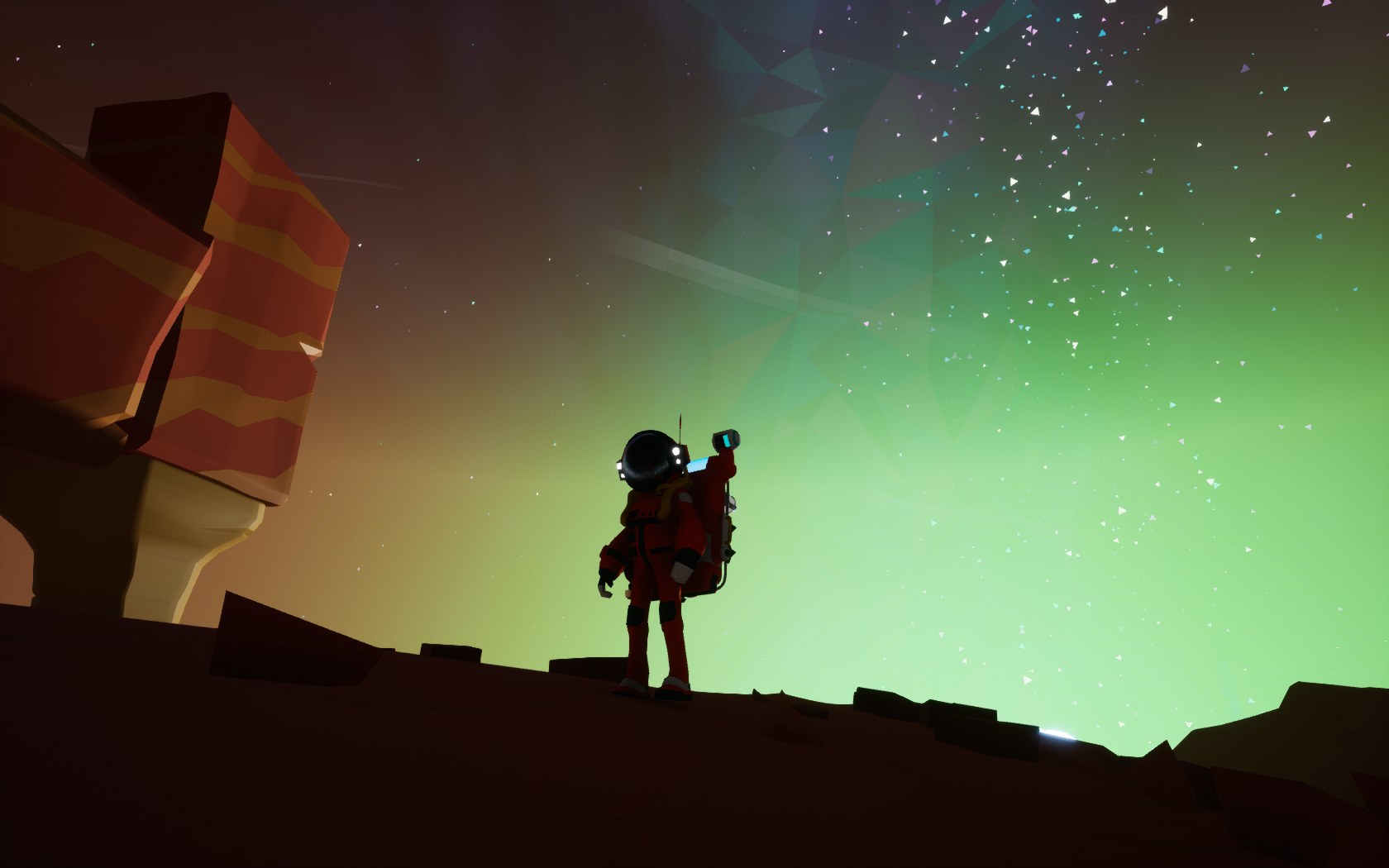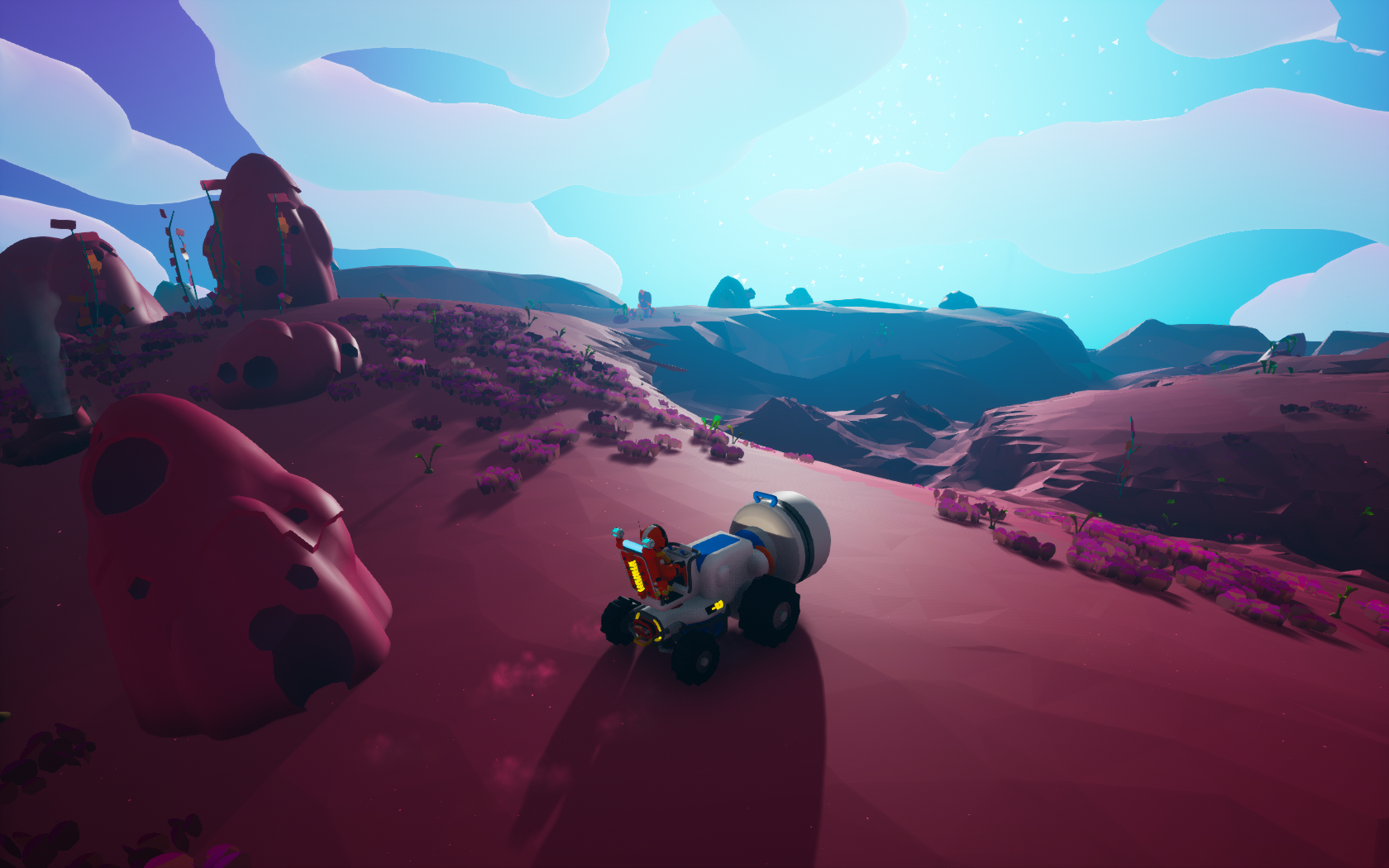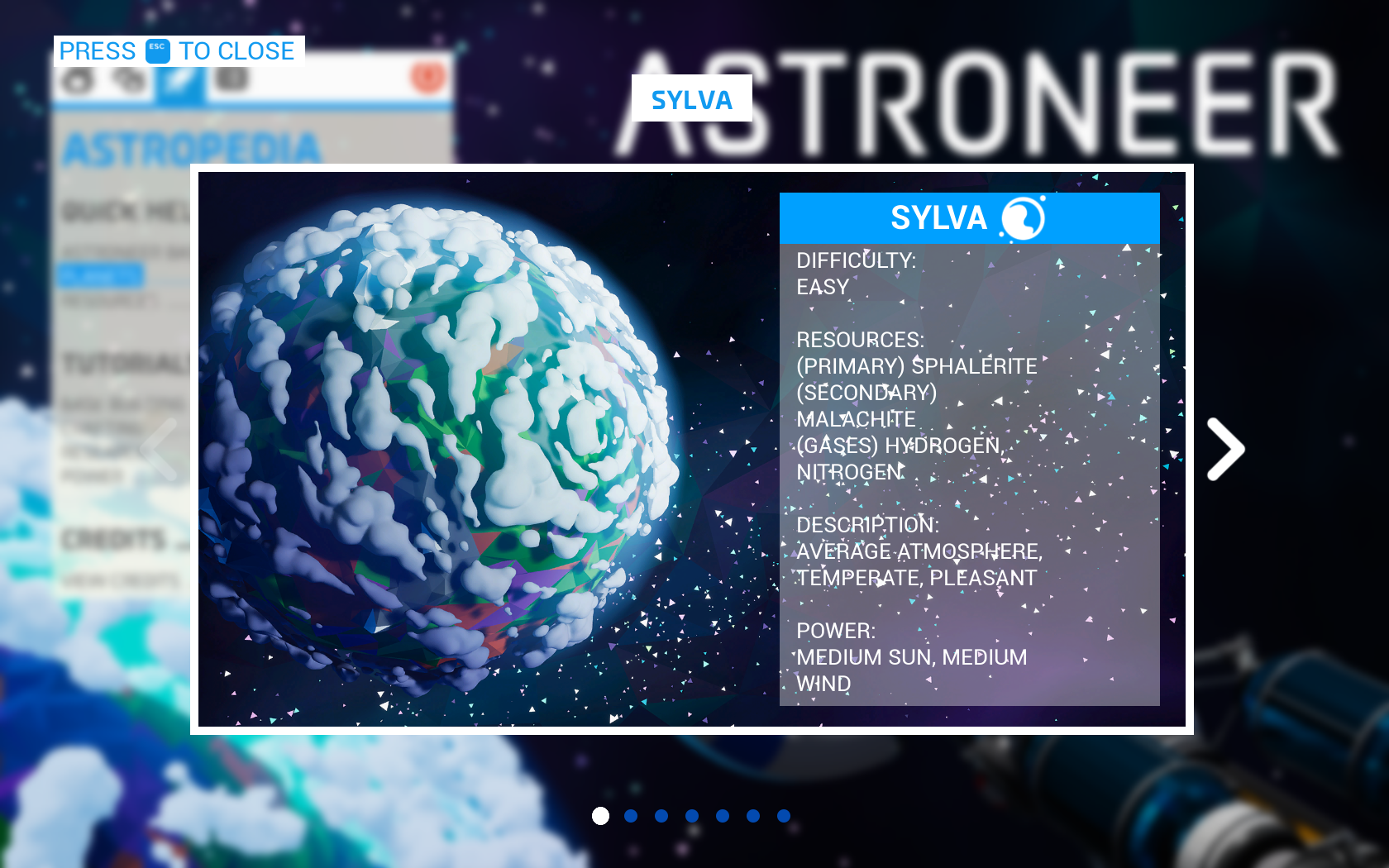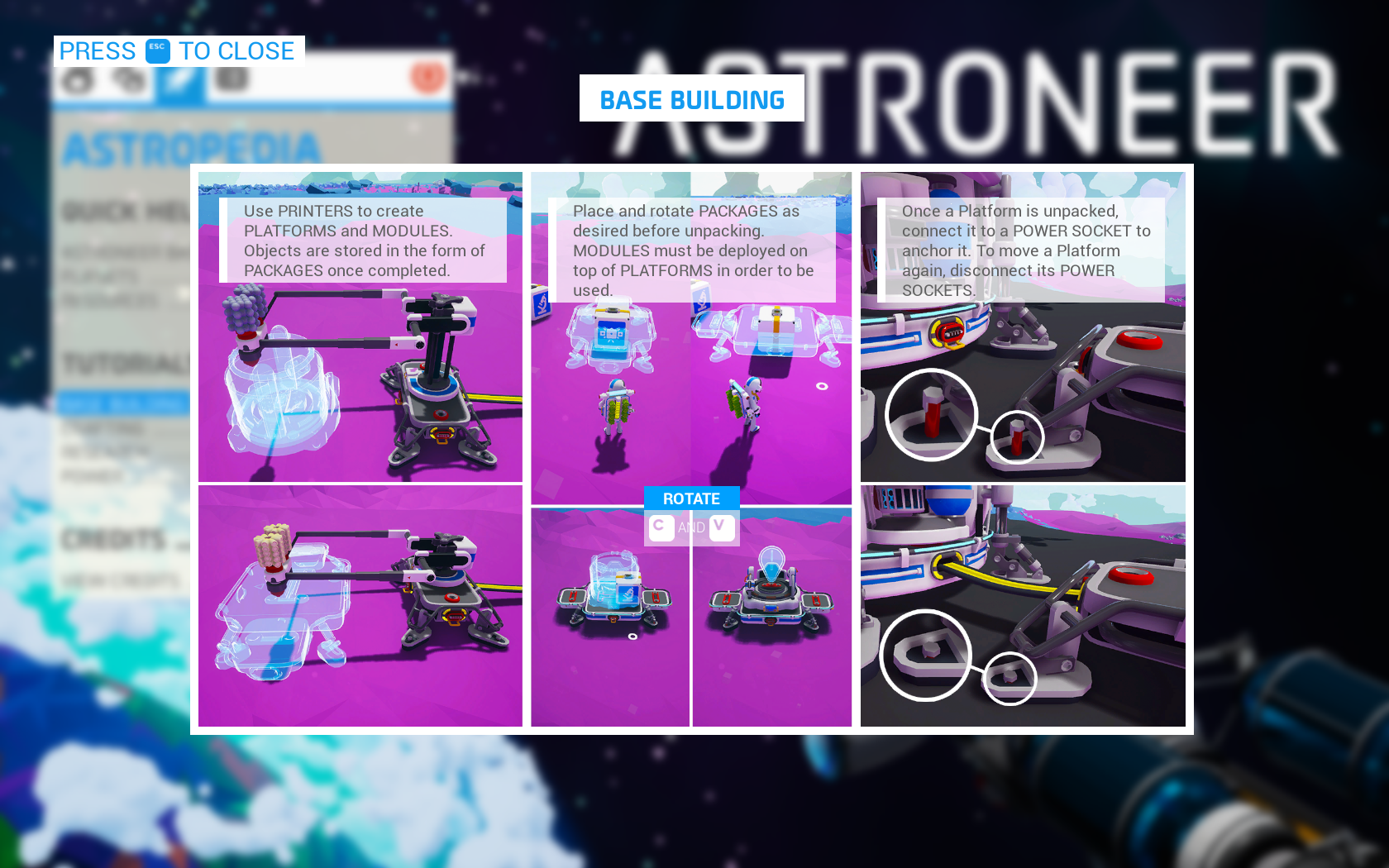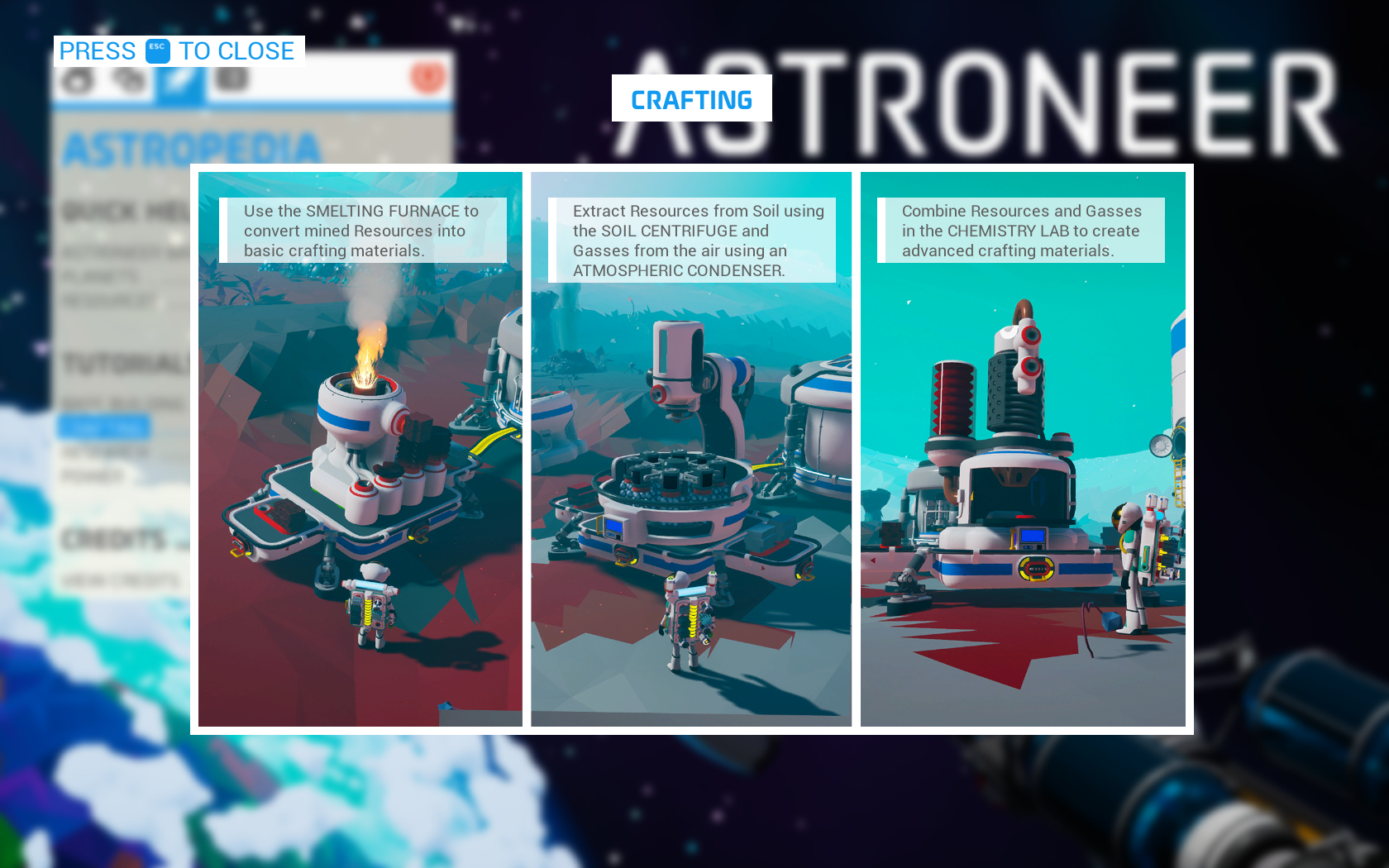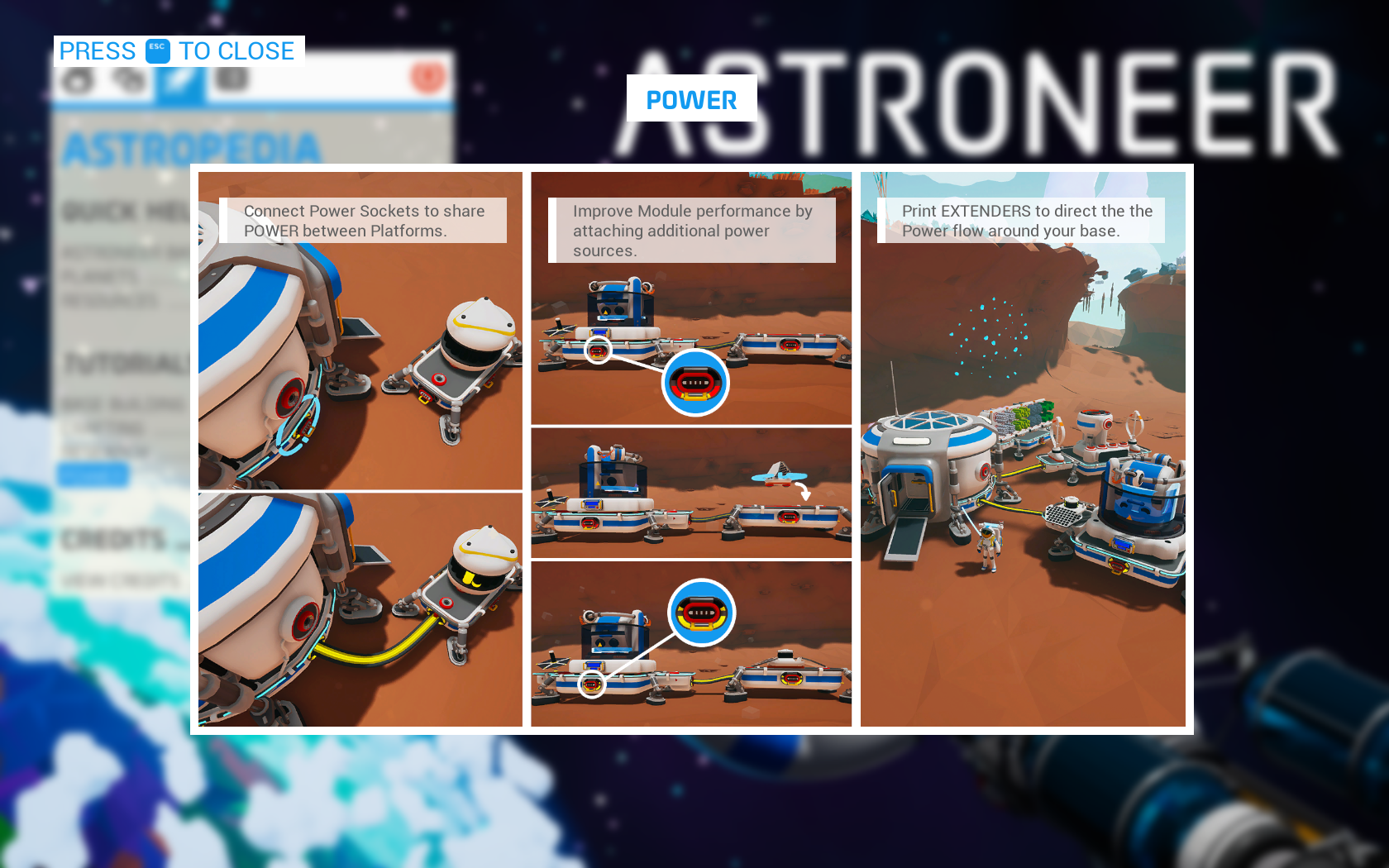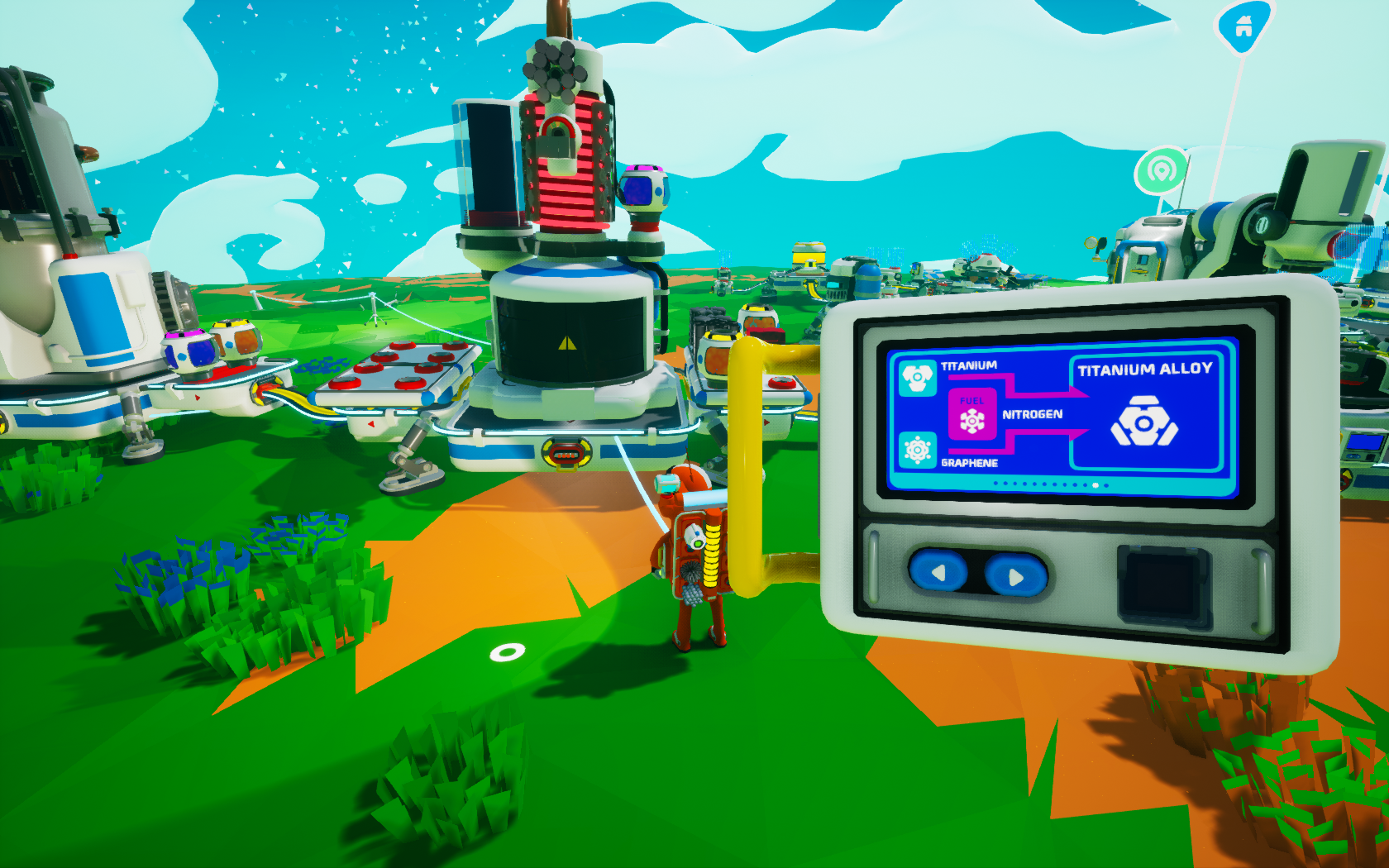It was at or around the time I had just watched The Martian (the one about extreme potato growing) that I got my first glimpse of Astroneer. I was immediately intrigued by the stylish visuals and ambitious terrain deformation mechanics, but more on that later. There are not that many games that I am banging the door down to get into early access, but this one looked too interesting to wait for. After gorging myself on countless tonnes of digital dirt (around a hundred or so hours) I decided to put Astroneer away and wait patiently for the final release. This week the 1.0 build of Astroneer has finally arrived, so let us dive in and see how deep this rabbit hole goes.
Astroneer is set in the 25th century of space exploration, according to the developers it is an age of discovery in which humans are exploring the distant stars in search of resources and mysterious artefacts. The newly founded System Era Softworks, which is based in Seattle, are just brimming with talent and industry experience. They wanted to make this first game reflect their own passion for space exploration and the joy of learning through science. The team has grown from just four founding members to a fierce posse of twenty. After just a few minutes looking through the developer's website and reading their launch day blog post, it is clear as day that this game comes from the heart.
Starman
The starting menu opens with you quietly drifting in orbit on a space station of sorts. From here you choose your Astroneer and launch down onto the colourful planet waiting below. Since I last played there are now a few cosmetic options such as varied suits, colour schemes and emotes. There is also a brief tutorial which does a great job of getting new players up to speed on how items interact and what your main initial goals should be. Once you start the game proper you hurtle towards the planet's surface (thankfully courtesy of an autopilot) and watch the game world transform from a one shade texture into a beautiful planetscape.
Once your chosen avatar bounces from the landing pod, your first task is to learn the ropes while gathering some basic resources. This is done via your trusty multi-drill, a device that allows you to deform the ground and simultaneously gather any resource in that space. These are then funnelled directly onto empty slots waiting on your backpack. Once you have enough resin, for example, you can start building conduits and platforms: these then, in turn, support various facilities such as a printer, vehicle bay and a smelting factory.
Master Builder
The two basic resources you must manage are O2 and power. As you touch down for the first time you are given a landing pad and a settlement shelter. The latter will provide you with O2 and is also rigged to eke out a minuscule amount of power. Your suit can hold a reserve of power and O2 but these won’t last long before your tool goes dark and you’re gasping your last breath. Once you’ve gathered a bit of compound, usually in plentiful supply on the starting planets surface, you can create a few tethers in your backpack. These essential items link a supply of air (and power) from your shelter to wherever you fancy exploring.
Every time you gather resources they will turn into units which become a physical chunk of whatever they are. Your suits backpack cannot only store these ‘chunks’ of stuff but also has a small fabrication unit built in. So getting yourself up and running with a base starts with your trusty backpack. This means as long as you have the basic minerals around you, setting up a base is always an option if (when) you get lost or find a better location. Once you have started to make strides with your base you will soon need resources other than resin and compound. Unless you head straight for the wiki (which I strongly recommend you avoid) you will need to do a good deal of exploration to find out where these more elusive minerals are hiding. Some will lie beneath your feet luring you into the darkness below, while others will require you to get familiar with the concept of space flight. This search for the things you need is, I think, at the very heart of what Astroneer is all about and the satisfaction of discovery is part of the magic.
The way power is represented and manipulated in Astroneer is perhaps my favourite aspect, like a neon river of yellow snaking its way around your creations. In essence, there are ways of generating power, structures or items that use that power and then there is also the final goal of storing surplus energy. Power is invariably displayed as yellow (O2 is blue), either in things that store power or the conduits that transfer it around the base. As soon as you build a battery or vehicle you can see its internal storage charging up on the sides. One of the first ways of generating power will be from an organic generator but its output is limited and requires you hacking down plants all around the base. Solar power is the way forward and for that, you will need to find copper. Watching the sun creep over the horizon and watching your solar panels automatically swivel to face its direction just shows you how well made this game is. Eventually, you will find lithium allowing you to create batteries, which will keep your base chugging away while the planet spins into night.
Sciencing the Shit out of Everything
If the power and O2 supplies are the circulation system of your base then research is the beating heart that keeps it alive. In the early days of the game research wasn't even a thing and it was the acquisition of resources that capped your progress. I think at some point the developers realised they needed a far more satisfactory way of gating the players progress and wisely they opted for a research tree. Hitting Tab will open the research window, here you can peruse and unlock the many items that will improve your prospects. A few items come unlocked (blue) but the rest appear in either grey (if you have enough bytes) and pink if you do not. There are two main ways of gathering bytes of research, the easiest is to click on the various small items you come across whether it be remains of large plants or small nodes sticking up from the ground.
Initially, it is far more efficient to build a research station and find the larger pieces of researchable items. As these various items get researched (assuming the station is powered) then bytes feed into your total which then, in turn, you use to unlock items. Some items are obvious in their function but others not so much and the lack of information sometimes leaves you scratching your head. This can be both a good or bad point depending on the kind of player you are. I myself like the experimental learning but I have heard a few friends say they would have liked some kind of built-in database. I will say that while the research system works perfectly well, I did find it was slightly out of whack in the later stages of the game. Once you reach the later planets, earning bytes becomes very easy and soon you will have unlocked everything there is. This, of course, will always happen with any gaming research tree, but I do think the research bytes available from the small nodes on harder planets should be tweaked down a little.
Lego for Space Monkeys
The way you manipulate objects and build is probably the most intuitive I’ve ever used in a game and it’s this success that makes Astroneer such a joy to play. Everything just clicks together in the most satisfying and user friendly way. Your backpack can be opened with a press of Q and your tool with E. Once open you can simply drag items from them into the game world or vice versa. When placing resources onto nodes there is just the right amount of stickiness that lets you know it will be in the right place and a little bit of mouse movement will hop it to the next one. Each node (the little red circles on everything) are also able to transfer power and O2. So when you attach a charged battery to something that needs power it doesn’t matter where you plonk it. The same can be said for any item from solar panels, O2 tanks etc.
Platforms and vehicles can also be tethered together with nifty little cables with can pulled out and tethered to other items. These cables are a very good example of how the game conveys information to the player in such simple and clever ways. Each cable will show you how much power is running through them and in addition, the tether point will even show the required power input for optimal function of that particular structure. Once you have a few vehicle platforms these can be tethered together to form one long train of awesomeness. One night I came back from a fairly long expedition to find my base drained of power. Wanting to get researching my haul I decided to try and find another source of power. Out of habit I coupled my Rover to the bases power grid and didn’t even realise when I attached my vehicle, the onboard power would be drained to serve the base.
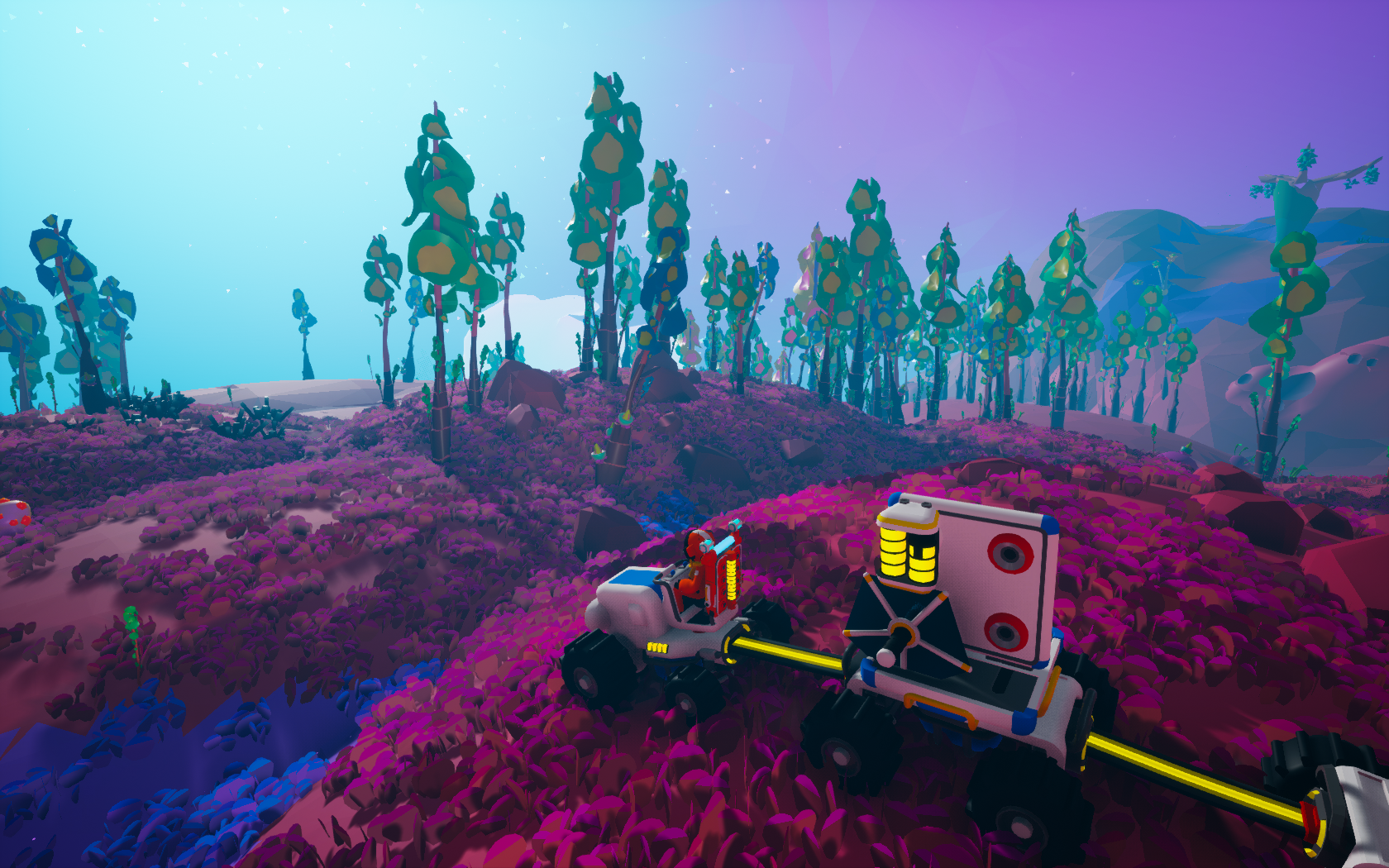
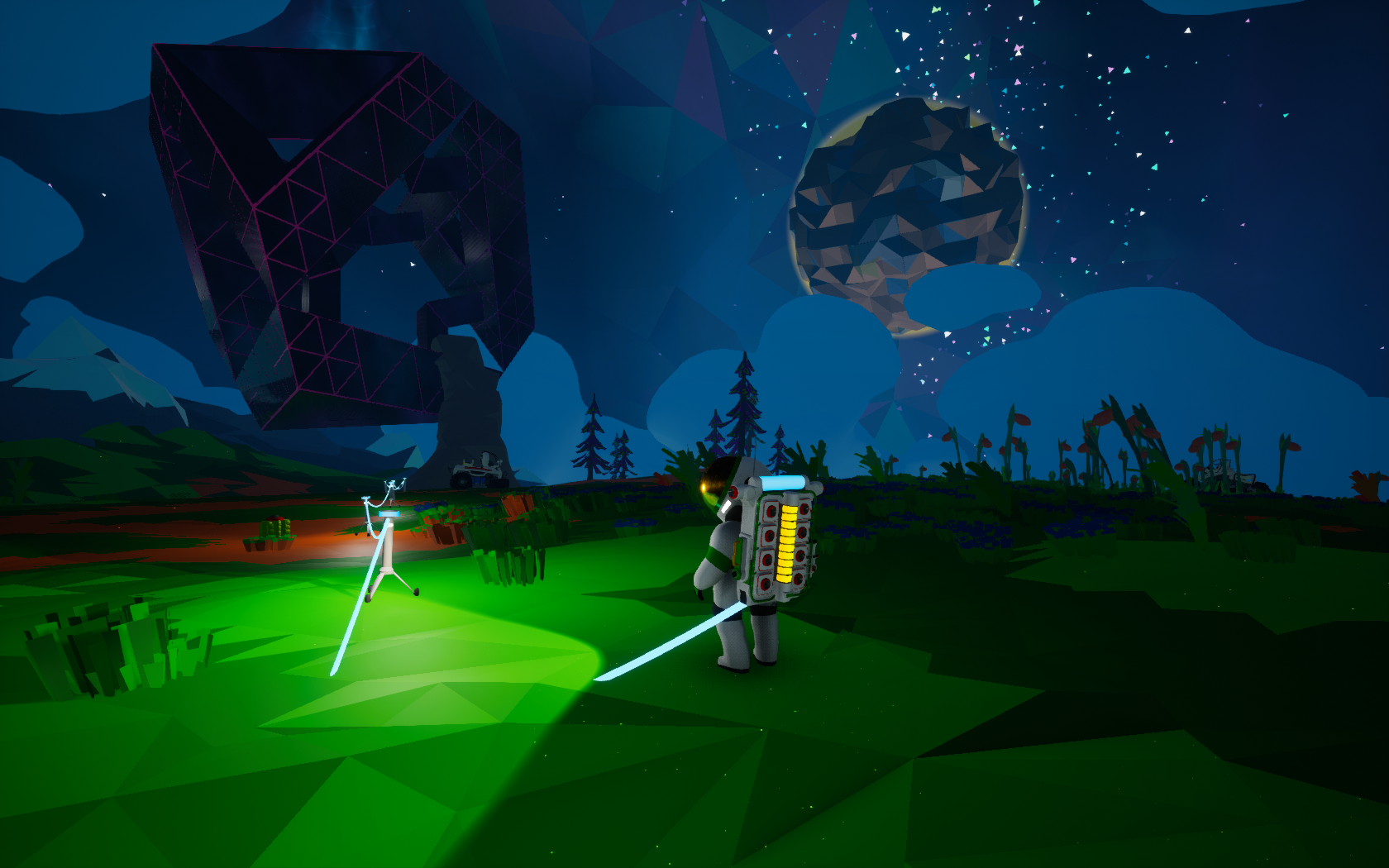
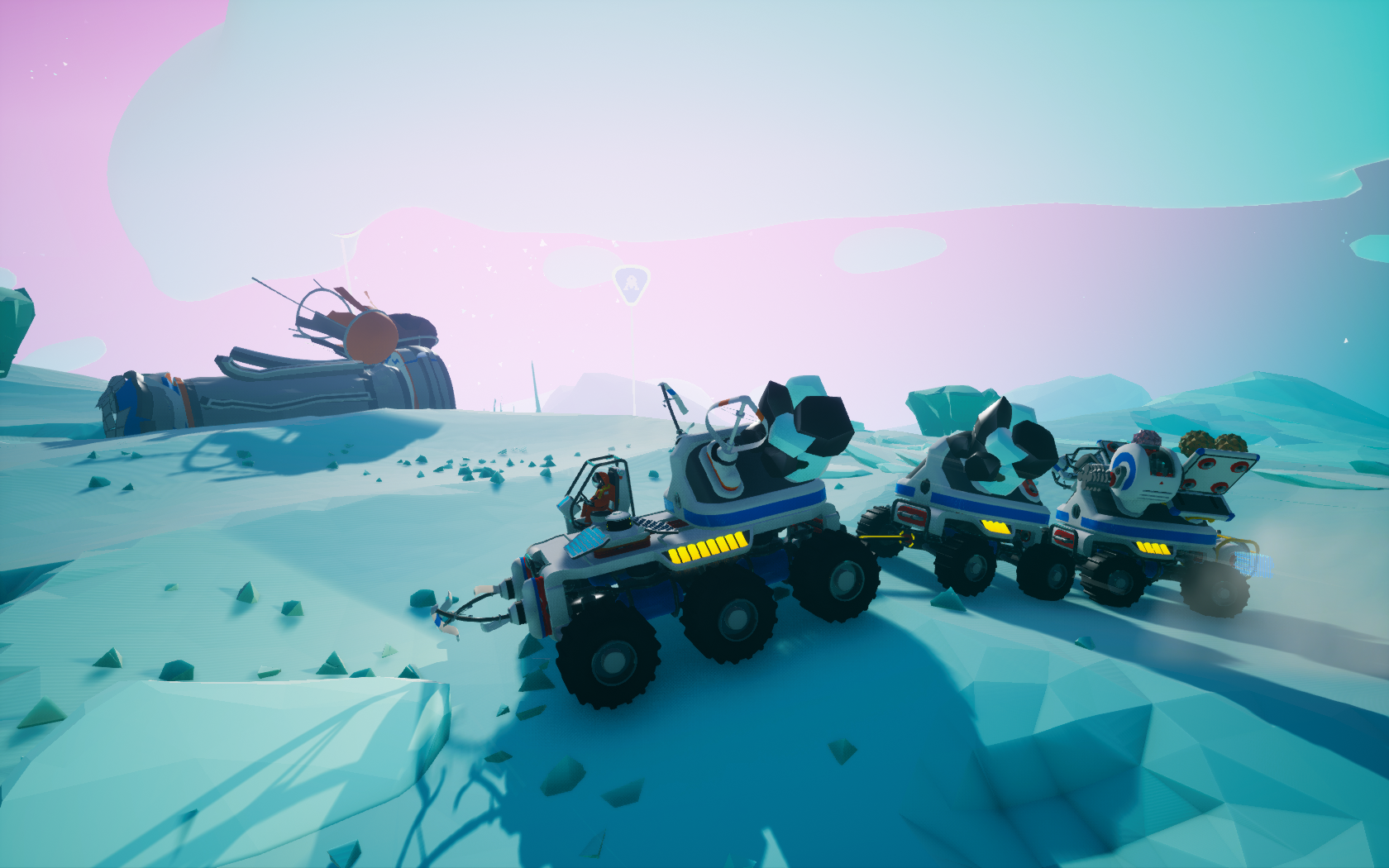
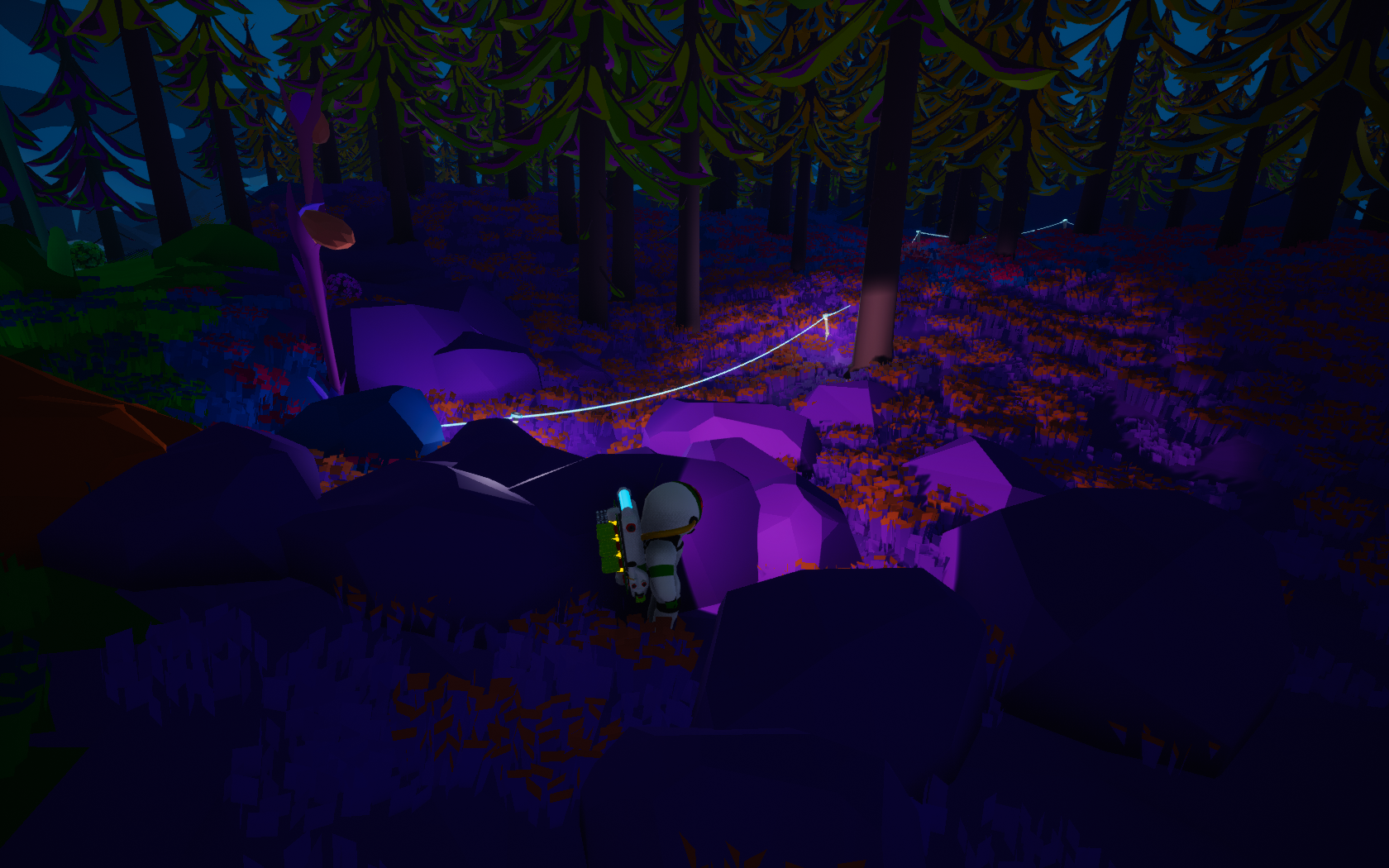
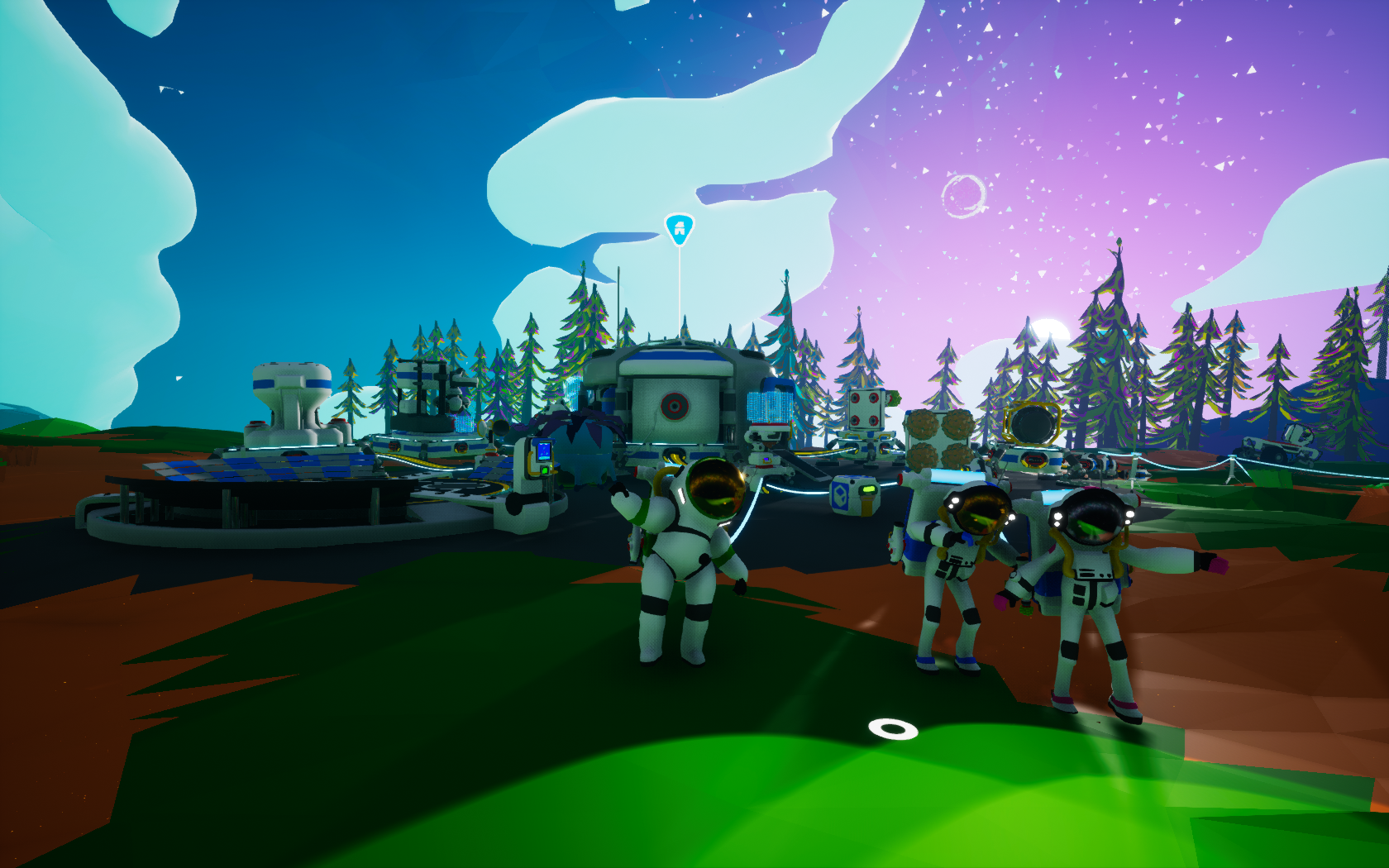
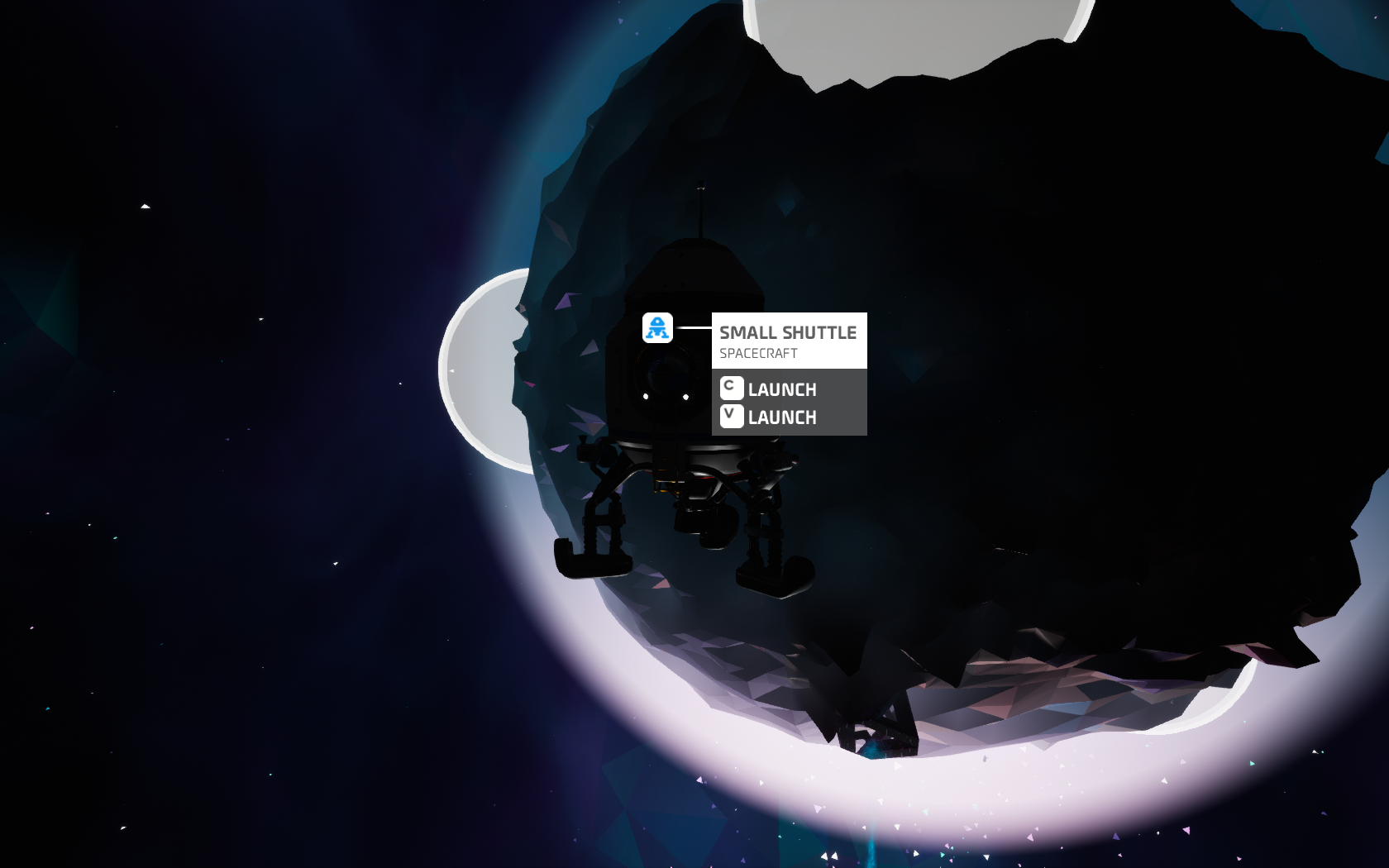
String Theory
The graphical style of Astroneer is one of simplicity over realism. While I suspect this was more of a choice than a sacrifice, it also helps the game throw itself around as much as it needs to. You see, one of the most impressive aspects of this title is that it simulates the entire solar-system in real time. When you see a distant planet schooning across the sky, as far as the game is concerned that planet is really up there doing its own thing. So for example, if I was to fly to said planet, dig out a cave and get a research base up and running: it keeps ticking over even when you leave the planet. This includes whether the solar panels you placed outside the cave are receiving daylight, whether the research items have been completed and pretty much everything that would happen if you were standing right next to it.
This might not sound all that impressive until you remember just how changeable this game world is. Like a huge sphere of space cheese, you can dig pretty much anywhere and the game remembers it all. At the time of writing, I have around a hundred hours in my main save and in that time I’ve made many changes to all of the planets in the system the game is based. I have seen a few streamers testing the game's systems, including one guy who literally drove his Rover into space. Upon leaving the pull of gravity his Astroneer and vehicle literally just starting floating off into the void. It is also interesting that if you build a big enough structure, it will be visible from orbit. So there is no cheating here, no clever loading screens or pretty sky boxes; what you see is what you get.
Death Wish
So when you’re not gathering like a beaver on speed or building giant space cocks, what else is there to write home about in Astroneer? It won’t be long before you notice the huge floating structures that are scattered around the starting planet. On closer inspection, it will become clear what must be done with these monoliths and this is the start of what you could consider to be the games overall objective. Right through development, there has been a complete lack of story or overarching objectives, other than the pursuit of resources and exploration of the more distant planets. At the time of my review, I have not completed all of these ‘objectives’ because they do require many hours to conquer and I do not wish to discuss them in detail due to spoilers.
There are a few ways to nobble yourself in this game, a nasty fall will do the trick or running out of air will also be problematic if you are keen on breathing. Once you die you will just spawn with a new body back at your last save point and you have the ability to scavenge bits from the discarded backpack. There are also various plants that you will come across, some will emit spikes, toxic gasses or even explosive seeds. The best way to deal with these hostile eukaryotes is to just dig away their base and they will pop like a Halloween piñata. These dangers aside there are no other life forms in the solar system (yet) to pose a threat and this will certainly split players in opinion. I have already heard a few prominent reviewers lament the lack of a substantial hostile menace or the ability to cordon off your settlements with automated sentry guns. I think the bottom line is that Astroneer is just not that kind of game.
I like that killing and defending hasn’t been used as a crutch to keep players engaged with the game long term, but I do wish there were a few more challenges being thrown into the mix. Just from my imagination, I would love to see explosive gas pockets on the more hostile planets. These would need specialist equipment to detect them and then syphon off the gas. Another cool idea could be comets and asteroids heading through the system. You could get notified of their location with a radar system and then have limited time to land on them and mine ultra-rare resources. I would also love to see some sort of molten rock put in place which would allow the threat of eruptions and volcanos to be a thing. Right through development, there have been deadly storms moving across planets which could literally kill you with one flying boulder. Unfortunately, these have been taken out of the game because they were not working properly but will be added again in a future update.
Is it PC?
Astroneer is an extraordinarily ambitious game and watching the developers wrestle with the constraints of gaming code has been interesting. Framerate issues have been present throughout the entire early access period and I am happy to say the latest version of the game runs beautifully, at least in solo play. There is an option to have up to four Astroneers in one game but unfortunately playing with other players can cause issues. Two players isn’t too taxing but once you get three or four players there is a noticeable hit to framerate. This is understandable due to the sheer amount of physics the game engine is calculating for four people at the same time. Many of the game's glitches have also reared their ugly heads while I have been in multiplayer. Falling through the ground, being catapulted into the air (and dying) and a whole list of item bugs. One bug which has been driving me mad (pun intended) is the one where your vehicles just stop working and only after messing with the tethers does it seem to wake up. So the bottom line is that while the developers have made huge strides getting 1.0 working, you will probably encounter a few bugs here and there. It has to be said that playing with three other friends was fantastic fun, even if one of them had a knack for putting our Rover at the bottom of inaccessible ravins!
The graphical settings available to players are basic but do a decent job of letting you tone things down for older systems. One feature I didn't try until just yesterday was the experimental clouds. If you have the horses I really do recommend this setting as they will give you some heartwarming sunsets. There is music to enjoy while coddiewompling across into the horizon and it does a sterling job of setting the tone. Mostly it sounds like slow synth tracks, think the opening score to Blade Runner.
Conclusion
So now Astroneer has been officially released where does it stand? Well, as far as I can see it has been very well received by most publications and review sites alike. I get the feeling it is also selling very well on Steam, sitting in the top ten for a few days now. The team at System Era Softworks have shown themselves to be extremely passionate about their work and also exceptionally competent as developers: so I have no doubt they will succeed with any plans they might have next for Astroneer.
Looking at the roadmap for post-launch there are some very exciting features to look forward to, such as liquid simulation, AI-driven creatures, a farming system (high on my wishlist) and various weather/climate events. A year ago the sandbox that we were playing in early access felt more like a framework for future systems to rest upon, but now with 1.04 we are starting to see where this beautiful game could go. The 2.0 terrain simulation also shows just how far the developers have come in understanding how to create the planets with much more varied topography. This title is well worth buying just on its own merits but obviously, if you are at all altruistic about the games industry, supporting excellent indie developers is a very good thing. I am very excited to see where Astroneer will go in the future but for now, if you’ll excuse me I’ve got space monkey to build.
I hope you enjoyed my review of Astroneer on PC. I’d like to thank Mark Watney for being a good friend in the cold harsh career of planetary exploration. One day we will grow potatoes together Mark, (as soon as those fine folks as System Era Softworks add farming!) but until that day I offer you the best substitute I could manage.


